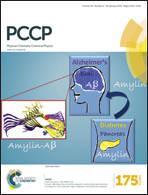Structural and electronic properties of ZnO/GaN heterostructured nanowires from first-principles study†
Abstract
ZnO/GaN alloys have exceptional photocatalytic applications owing to their suitable band gaps corresponding to the range of visible light wavelength and thus have attracted extensive attention over the past few years. In this study, the structural stabilities and electronic properties of core/shell, biaxial, and super-lattice ZnO/GaN heterostructured nanowires have been investigated by means of first-principles calculations based on the density functional theory. The effects of the nanowire size, the GaN ratio, and strain have been explored. It is found that all studied heterostructured nanowires are less stable than pure ZnO nanowires, exhibiting larger sized wires with better structural stabilities and inversely proportional relationship between structural stability and the GaN ratio. Electronic band structures imply that all heterostructured nanowires are semiconductors with the band gaps strongly depending on the GaN ratios as well as mechanical strain. Particularly, for the biaxial and the super-lattice nanowires, their band gaps decrease firstly and then increase with the increasing GaN ratios. Electronic contributions to the valence band maximum (VBM) and the conduction band minimum (CBM) are discussed for exploiting the potential photocatalytic applications.


 Please wait while we load your content...
Please wait while we load your content...